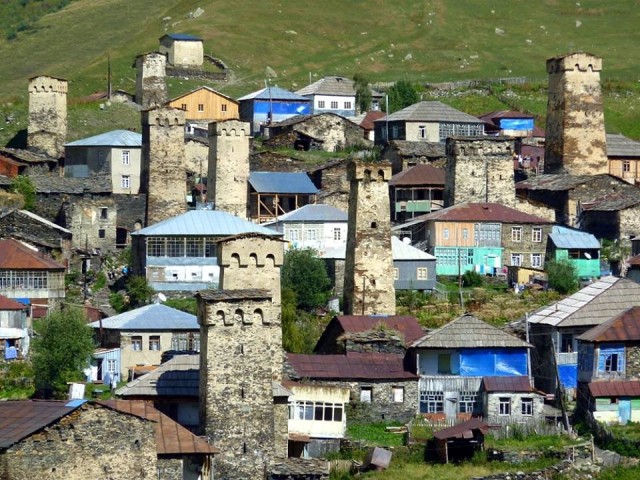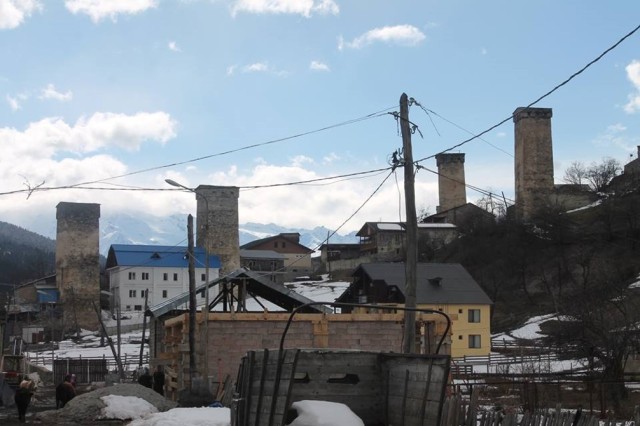I have recently contributed to a great piece of work on the negative social and environmental impacts of overtourism worldwide, written by Green Global Travel: How Mass Tourism is Destroying 30+ Destinations Travelers Love. My bit about Svaneti, a remote, mountainous region of northern Georgia, is under the “Tourism in Europe” section.
“Mass tourism was arguably the most significant travel trend of 2017. Its downside, “overtourism”– the point at which the needs of tourism become unsustainable for a given destination– made headlines all across the world”, the article says.

To accommodate more tourists, more extensions to family houses are built that are incompatible with the local cultural and architectural heritage.
Svaneti has been close to my heart since my first trip there in 2001, and I have witnessed the incredible change over the past 17 years. Although the region is not, understandably, struggling with overtourism as much as other European destinations such as Barcelona, Dubrovnik, and Venice, the negative effect of the rapid growth of tourism in Svaneti are undeniable (and will be growing).
I can talk about it for hours but thankfully I was limited to 200 words. So here is what I wrote for the Green Global Travel:
Situated on the southern slopes of the Greater Caucasus mountains and surrounded by 16,000-foot peaks, stunning Svaneti is one of the fastest growing tourism destinations in Georgia.
The mountains, remoteness, and unique indigenous traditions make it an ideal destination for hiking, trekking, wildlife, and cultural tourism. However, negative impacts of tourism can already be seen.
When I first visited Svaneti in 2001, I didn’t see any other tourists for a week. In 2014 there were 14,160 visitors, and by 2016 there were 18,347. Because most tourists go to Mestia (2,700 inhabitants) and hike/drive east towards Ushguli (200 inhabitants) between June-September, it’s getting harder to accommodate them.
New concrete guesthouses are being built randomly, without any permission. But they’re incompatible with the local cultural and architectural heritage and ultimately spoil the picturesque landscape.

New concrete guesthouses are being built randomly between the 1,000-year-old Svan towers
Farmland has been reduced to build new accommodations and ski facilities, causing problems with local food supplies. There’s a growing issue with solid waste disposal in villages and along the hiking trails. And the famous Svan hospitality is vanishing: getting invited to dine with the local family is now very rare.
Svaneti is at risk of losing its traditional charm. To avoid the crowds, head west of Mestia, where tourism has hardly been developed at all.
